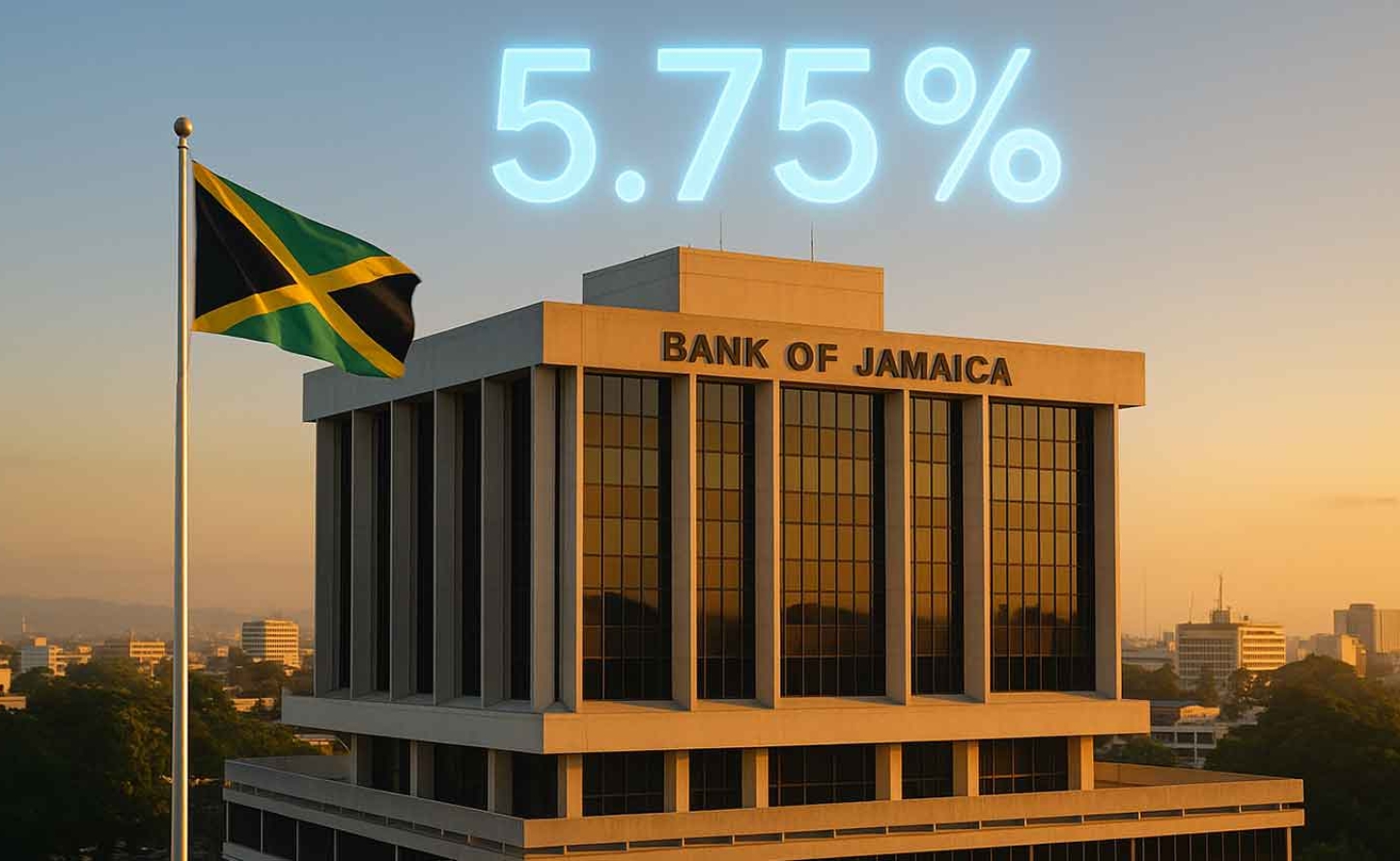JAMAICA | BOJ Holds Steady at 5.75% as Jamaica Navigates an Inflation Paradox

Central bank maintains policy rate despite headline inflation far below target, citing temporary factors and future risks
KINGSTON, Jamaica, Sept 30, 2025 - In a decision that might puzzle casual observers, the Bank of Jamaica's Monetary Policy Committee has opted to keep interest rates unchanged at 5.75 per cent, even as headline inflation languishes well below the central bank's comfort zone.
The unanimous decision, announced following the MPC's September 25-26 meetings, reflects a careful balancing act between celebrating current economic stability and preparing for potential storms on the horizon.
At first glance, the numbers seem to argue for a rate cut. With headline inflation sitting at just 1.2 per cent in August 2025—far below the BOJ's target range of 4 to 6 per cent—one might expect monetary authorities to ease their grip on interest rates.
But the MPC is looking beyond the surface, and what they see tells a more complex story.
The Inflation Puzzle
The key to understanding the BOJ's decision lies in distinguishing between what's temporary and what's structural. That remarkably low 1.2 per cent headline figure, the central bank explains, is largely the product of fortunate circumstances rather than fundamental economic weakness.
Hurricane Beryl's devastating impact on domestic agriculture in 2024 had sent food prices soaring. A year later, with farms recovered and supply chains normalized, agricultural prices have returned to more reasonable levels.
The base effect—comparing current prices to that inflated period—makes the year-on-year inflation figure look deceptively low.
Add to this the government's March 2025 decision to reduce the General Consumption Tax on electricity, along with the fading impact of previous public transport fare adjustments, and you have a perfect storm of downward pressure on the headline number.
These are the monetary policy equivalent of a sugar rush—sweet while they last, but ultimately temporary.
The more revealing metric, the MPC argues, is core inflation, which strips out volatile food and fuel prices to reveal underlying price pressures. That figure stands at 4.2 per cent, comfortably within the target range and a much better indicator of the economy's true temperature.
Reading the Economic Tea Leaves
What makes the BOJ's steady-as-she-goes approach particularly interesting is that it comes against a backdrop of robust economic growth. The economy expanded in the March quarter and continued its upward trajectory through June and September, with growth for the latter quarter estimated between 3 and 4 per cent.
This isn't the kind of sluggish, demand-starved economy that typically produces ultra-low inflation. Quite the opposite—the labour market is tight, wages are rising, and domestic demand is healthy.
The low headline inflation, in other words, isn't signaling economic weakness that requires stimulus. It's a temporary blip in an otherwise vigorous economy.
This distinction matters enormously. Cutting interest rates in response to temporary inflation suppression could risk overheating an economy that's already running warm, potentially storing up problems for later when those temporary factors dissipate.
The Forward View
The MPC's projections suggest headline inflation will remain below target for the remainder of 2025 before climbing back into the 4-6 per cent range by the March 2026 quarter. As agricultural prices normalize fully and the effects of tax cuts fade, the underlying economic strength should reassert itself in the inflation numbers.
But it's the risk assessment that truly explains the committee's caution. The MPC sees inflation risks as "skewed to the upside"—meaning they're more worried about inflation surprising higher than lower.
The potential culprits are largely external: escalating US tariff regimes that could raise import costs, geopolitical tensions disrupting supply chains, and the broader uncertainty in global markets.
There's a silver lining in the international picture, however. As central banks abroad have cut rates, the differential between Jamaican and foreign interest rates has widened, making domestic assets more attractive.
This should help support stability in the foreign exchange market—one of the BOJ's key mandates. The current account surplus and healthy international reserves provide additional cushioning.
A Calculated Patience
The BOJ's decision reflects a central bank confident enough in its economic reading to resist the politically appealing option of rate cuts. It's a vote of confidence in Jamaica's macroeconomic stability and a signal that monetary policy won't chase short-term statistical quirks at the expense of medium-term stability.
For businesses and consumers, the message is clear: borrowing costs will remain stable for now, but the economic fundamentals remain sound. The next policy announcement on November 20 will reveal whether this patience continues to be warranted, or whether the data demands a different response.
In monetary policy, as in life, sometimes the hardest decision is to do nothing at all.
-30-

 En
En  Ar
Ar